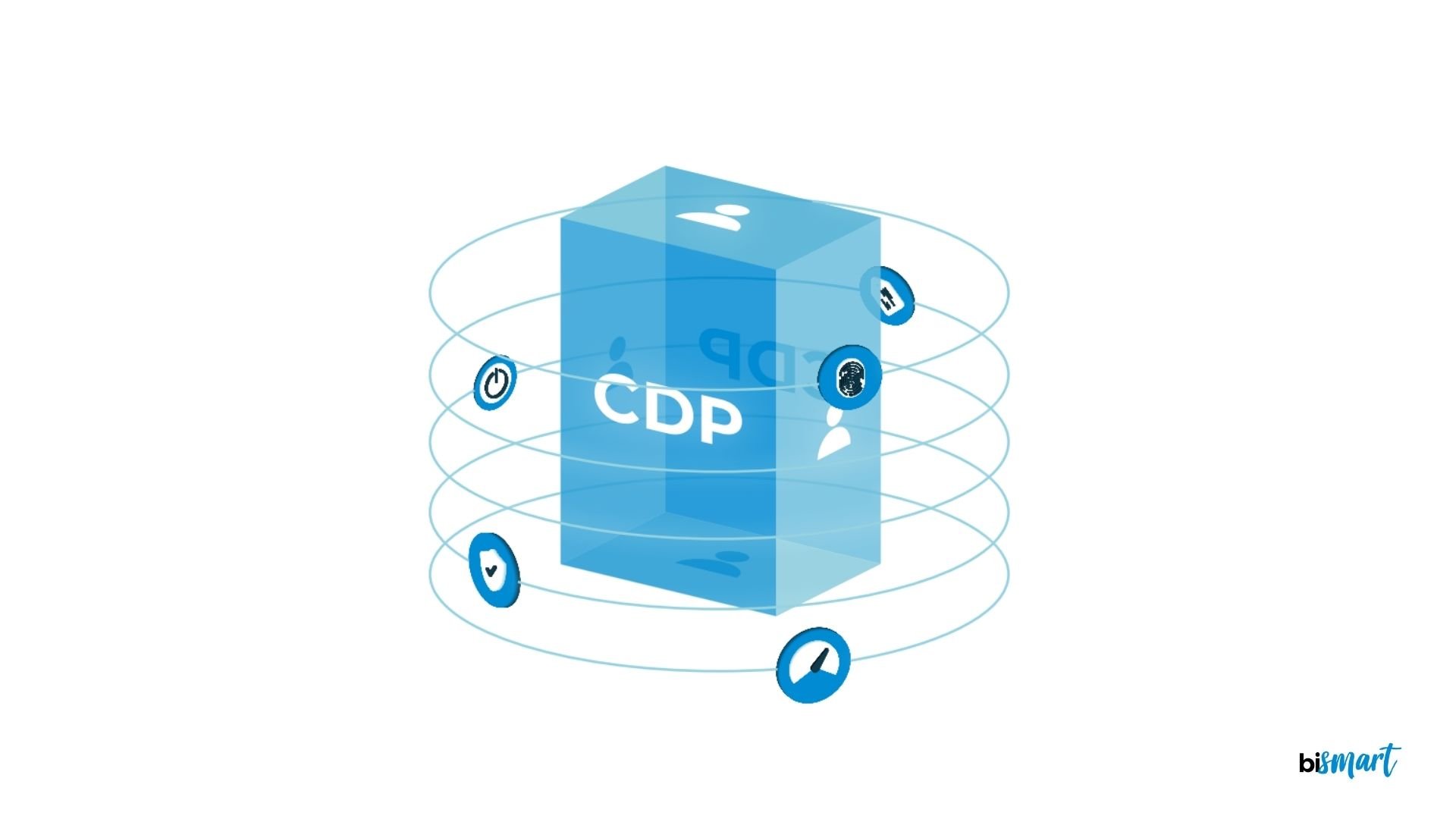Transform your business with Customer 360: Explore the importance, benefits, and steps to create a comprehensive 360 customer view. Discover how data integration and analytics drive success.
In today's data-driven business environment, understanding customers is one of the most important business objectives for any type of business.
As most businesses advance towards a customer-centric approach, the necessity to know and understand the customer better is becoming company's obsession. In this scenario, customer data becomes a kind of holy grail that most people know where to find but still don't know how to use.
A Customer 360 View is part of the vision. Having a complete view of the customer: who they are, what they do, what they need, what they want, when they want it and where... and the list goes on. All of this in one place.
Are 360 Customer Views just a dream? Follow us on this journey of exploration to find out the answer.
- Discover how a top pharma company boosted email open rates by 25% and engagement by 35% with a personalized 360 Customer Analytics Platform.
Case Study: 360 Customer Analytics
Discover how a pharmaceutical company managed to improve its relationship with its customers.
Customer 360 as a Concept:
What is a 360 Customer View?
Customer 360 or a 360 Customer View is an advanced customer-centric strategy that leverages customer data to create detailed, 360-degree customer profiles by integrating all information into a single system.
This approach addresses data fragmentation, providing a complete and comprehensive view of who a company's customers are, facilitating a better understanding of their needs and behaviors.
To build a 360 customer view, data integration is a must. In the context of customer analytics, data integration involves integrating information from multiple customer relationship management sources, such as CRM systems, ERP software, social media, e-commerce, etc., to ensure that all relevant data is captured.
Unified customer profiles mean that all customer interactions and data points are consolidated into a single, continuously updated profile, providing a comprehensive view of the customer.
The benefits of implementing a Customer 360 View are manifold. It leads to improved customer experiences by enabling personalized interactions. Marketing strategies become more effective as they are based on comprehensive, real-time customer data. Additionally, informed data-driven decisions become the regular as decision makers have all the customer insights where and when they need them.
Once we know what a 360 Customer View and why every company needs it, the obvious next question is: how do we create it?
How to Create a Customer 360 View?
As mentioned above, the cornerstones of a Customer 360 strategy are solid data integration and data analytics strategies. These basics form the foundation for creating detailed, accurate customer profiles and generating actionable insights that drive business success.
Step by Step: Customer 360
Data Integration: The process begins with collecting data from multiple sources, such as CRM systems, ERP software, social media platforms, and e-commerce sites. Data integration involves aggregating this disparate data into a single, cohesive system. This ensures that no valuable customer information is left out, allowing businesses to have a complete view of their customers. By breaking down data silos, companies can unify their data, providing a more holistic understanding of customer behavior and interactions.
Unified Customer Profile: After integrating the data, the next step is to create unified customer profiles. This involves cleansing and normalizing the data to remove duplicates and ensure consistency and accuracy. The aim is to compile all customer interactions and data points—such as purchase history, browsing behavior, and social media activity—into a single, continuously updated profile. These profiles provide a comprehensive view of each customer, allowing businesses to understand their preferences and anticipate their needs.
Customer Data Platform (CDP): Implementing a Customer Data Platform is essential for managing and centralizing customer data. Unlike traditional CRM systems and Data Management Platforms (DMPs), a CDP can handle vast amounts of data and perform real-time processing, ensuring that customer profiles are always current and complete. This centralized system enables businesses to analyze data more effectively and derive meaningful insights.
Data Security and Privacy: Ensuring data security and privacy is a critical aspect of building a Customer 360 view. Compliance with regulations such as GDPR and HIPAA is mandatory, and businesses must implement robust data protection measures. This includes encryption, access controls, and regular security audits to safeguard customer information. By prioritizing data security, companies not only protect their customers' sensitive information but also build trust and credibility with their customer base.
All these steps or stages of the process are just the basics for building a really comprehesive 360 customer view.
Case Study: 360 Customer Analytics
Discover how a pharmaceutical company managed to improve its relationship with its customers.
From 360 Customer View to 360 Customer Analytics
Difference Between A 360 Customer View and 360 Customer Analytics
360 Customer View
A 360 Customer View is an integrated, holistic profile of a customer, compiled from data across various touchpoints within an organization. This view consolidates information from CRM systems, social media interactions, purchase history, customer support tickets, and other data sources to create a comprehensive picture of the customer's interactions and behavior.
The primary goal is to break down data silos and provide a unified, consistent view of the customer, accessible by different departments to enhance customer service, marketing efforts, and sales strategies.
360 Customer Analytics
360 Customer Analytics takes the data from the Customer 360 view and applies advanced analytics techniques to derive actionable insights. This involves using predictive models, machine learning algorithms, and statistical analysis to understand patterns, forecast future behaviors, and inform strategic decisions.
The focus is on transforming raw data into meaningful insights that can predict customer needs, personalize marketing campaigns, optimize operational efficiency, and drive overall business growth.
Implementing a Customer 360 Analytics Platform
Implementing a Customer 360 analytics platform involves centralizing and analyzing customer data by leveraging customer analytics platforms and technologies as well as advanced data analytics.
Customer 360 Tools
Of course, the most well-known and used tools for this are Customer Relationship Management (CRM) systems, specially Salesforce.
However, in recent times, CRM systems are progressively being replaced by a new technology: the Customer Data Platform or CDP.
A Customer Data Platform is a new technology designed to build 360 customer views that resolves some of the problems traditional CRM systems have. The main difference is that CDPs have better data integration capabilities than CRMs.
Customer 360 and CRM
Customer Relationship Management (CRM) systems manage interactions with current and potential customers, focusing on relationship-building and sales management. While CRMs are excellent tools for managing customer interactions and data, they have limitations. They typically handle data related to direct interactions with customers, such as sales and service interactions.
On the other hand, Customer 360 extends beyond CRM by integrating data from all customer touchpoints, not just direct interactions. This creates a unified view that includes transactional data, social media activity, and more. For example, a CRM might record a customer's purchase history and service inquiries, but a Customer 360 view will also include their browsing behavior, social media interactions, and feedback from various channels.
The distinction lies in the scope and depth of data integration. CRM systems manage predefined data from existing customers, while Customer 360 integrates broader data, providing a comprehensive view of customer behavior and preferences.
Customer 360 and Customer Data Platform (CDP)
A Customer Data Platform is a cutting-edge technology designed to unify and centralize customer data from multiple sources, creating a comprehensive and dynamic customer profile. CDPs go beyond traditional CRM systems by integrating all customer interactions, both known and anonymous, across multiple touchpoints. This allows businesses to deliver highly personalized and consistent customer experiences. By providing a 360-degree view of the customer, CDPs enable better understanding and anticipation of customer needs, driving more effective engagement and fostering loyalty.

Case Study: Customer 360 Analytics
Learn how a top pharmaceutical company harnessed customer data to create a personalized 360 Customer Platform. This case study showcases groundbreaking strategies and impressive outcomes, including:
- A 25% rise in email campaign open rates
- A 35% boost in customer engagement
- A 20% enhancement in customer satisfaction
- A 15% improvement in conversion rates
Case Study: Customer 360
Discover how a pharmaceutical company managed to improve its relationship with its customers.
Conclusion
In today's data-driven business landscape, achieving a profound understanding of customers is essential. A Customer 360 View integrates data from multiple sources to create a unified, detailed profile of each customer. This enables personalized interactions, effective marketing, and data-driven decision-making.
Creating a 360 Customer View involves robust data integration, unified customer profiles, and the use of Customer Data Platforms (CDPs). These tools offer superior data integration compared to traditional CRM systems, providing a comprehensive view of customer behavior and preferences.
It's crucial to differentiate between a 360 Customer View and 360 Customer Analytics: the former consolidates data, while the latter applies analytics to generate actionable insights. Case studies, such as that of a pharmaceutical company, illustrate the significant benefits of this approach.
In conclusion, a 360 Customer View is a strategic imperative for any business aiming to thrive. By leveraging advanced data integration and analytics, companies can foster deeper customer connections, drive loyalty, and achieve greater business success.



